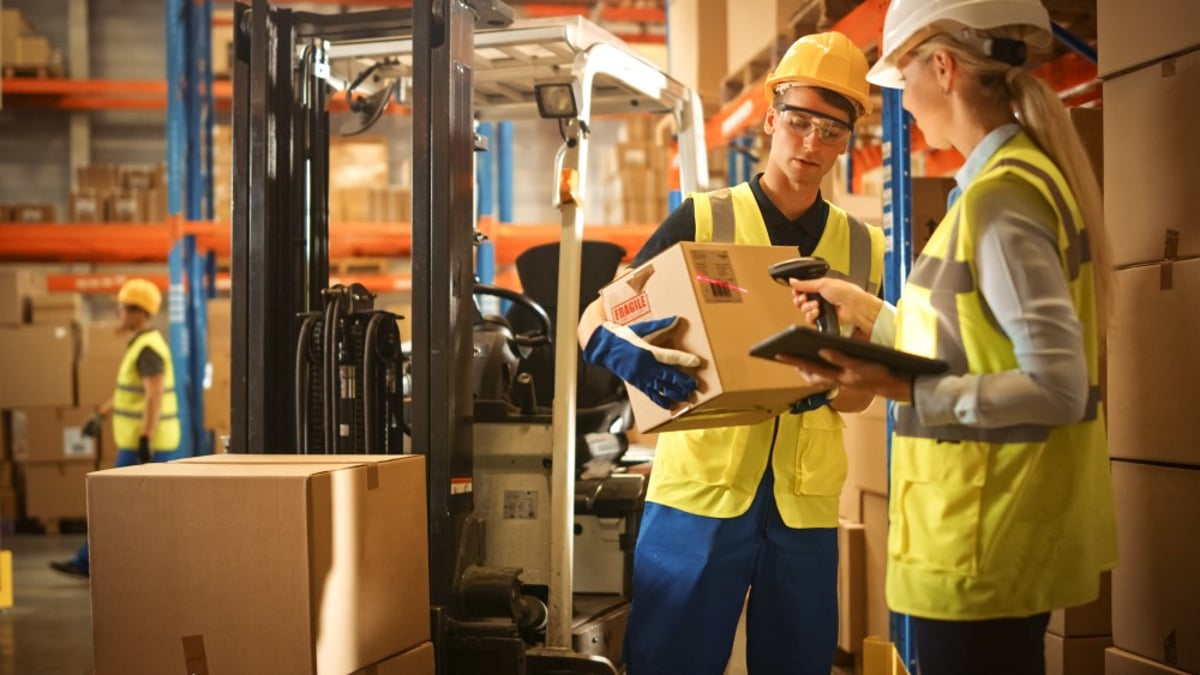More Fulfillment Center Topics
Consumer buying channels have expanded and evolved, causing a ripple effect for logistics providers and partners. While the pandemic increased online retail sales 32.4% year-over-year in 2020, the rise in ecommerce has been steadily climbing for years, and in many cases grew more than expected. It isn’t just business to consumer (B2C) sales either. Business to business (B2B) ecommerce has also grown with sales projected to reach $1.2 trillion in 2021 as wholesalers, manufacturers, or retailers exchange products and services online. There has even been a rise in consumer to consumer (C2C) purchases as well.
As buying from online channels continues to be our “new normal,” this has meant changes for many fulfillment providers—especially third-party logistics (3PL) warehouses. The first major change has been how to build a fulfillment strategy to meet 3PL customer demands wherever and however they sell. For many 3PLs, this began with a strategy to improve warehouse operations that support ecommerce fulfillment centers. Today, this means developing and implementing an omnichannel fulfillment strategy. But what exactly is this? Do you need to optimize your 3PL warehouse to offer omnichannel fulfillment for your customers? Will it impact your 3PL’s future business growth opportunities?
Let’s find out.
What is Omnichannel Fulfillment?
This question reminds me of a story when I first started working at Extensiv. As a newbie to the logistics industry, I wanted to learn about our customers’ fulfillment offerings. I conducted interviews with our customers and asked what channels they receive orders from and if they offer omnichannel fulfillment. I received several questions about what I meant by omnichannel fulfillment or if I meant ecommerce fulfillment. In some cases, I was told “no we don’t offer omnichannel fulfillment, but we fulfill orders for any channel my customer uses.” You guessed it, omnichannel.
Fast forward five years and now many of our warehouse customers fulfill orders from multiple selling channels to meet their clients’ needs. So, is this omnichannel fulfillment? The answer is, it depends.
Omnichannel fulfillment is a strategy of having a unified approach to managing inventory and order processing from a variety of channels. Basically, it allows a 3PL warehouse to streamline the fulfillment processes and distribution of orders from multiple selling channels. The key here, however, is unified.
A successful omnichannel fulfillment strategy should allow for the same inventory, order, and return processes, regardless of channel, to help a 3PL warehouse meet the needs of their customers more quickly and efficiently.
So, What About Multi-Channel Fulfillment?
What’s the difference between multi-channel and omnichannel fulfillment? The multi-channel strategy siloes inventory based on the individual sales channel. The most common example here is Amazon FBA. While this approach may seem easier to implement at first, it can become cumbersome for 3PL customers who may look for additional delivery options or returns for online purchases as time goes by. This can be especially hard for 3PLs looking to grow their customer base where consumers shop multiple channels. Additionally, when supply chain backlogs exist, accessing one combined set of inventory may offer the ability to more quickly fulfill orders versus having separately allocated inventory.
Yet, it depends on how you want your warehouse to grow.
Omnichannel Growth Drivers
For 3PLs looking to grow their business and meet growing consumer expectations, optimizing your fulfillment strategy to offer omnichannel fulfillment is becoming more popular—and with good reason.
In the 2021 Third-Party Logistics Warehouse Benchmark Report, it was noted that nearly 85% of 3PLs experienced order volume growth in 2021. However, warehouses who offered omnichannel fulfillment saw the highest percentage of order volume growth at nearly 92%.
An example of how a 3PL warehouse can expand its omnichannel fulfillment footprint is by working directly with a manufacturer as their single fulfillment partner. As the main fulfillment center's provider, a 3PL can manage multiple selling channels and become an invaluable partner. For example, your warehouse can pick, pack, and ship from the warehouse to the consumer, a pickup location, or a store. Returns are just as easy for consumers to ship directly to the warehouse. It is the ultimate option for meeting warehouse customer and consumer demands simultaneously.
What a 3PL Needs to Optimize for Omnichannel Fulfillment
With a fully baked omnichannel fulfillment strategy, 3PL warehouses will need a few items to offer optimized efficiency and accuracy.
The most important is understanding your customers’ needs to build a warehouse technology stack that is reliable. Utilizing technology will improve warehouse operations so 3PLs can easily process online orders from several selling channels and allow for seamless integrations to achieve order growth. This begins with a warehouse management system (WMS). This year, WMS ranked as the most implemented technology for 3PLs at 84%. This was followed by mobile barcode scanning (53%) and order management systems (52%). All of which are imperative for a successful omnichannel fulfillment strategy.
Without these key technology components, 3PLs lack the required visibility for inventory and order management and picking, packing, and shipping using hands-free mobile barcode scanning.
Enhanced technology is a 3PL’s best opportunity to offer increased accuracy, optimized efficiency, and meet the needs of your customers— all with greater visibility into processes and labor.
How to Learn More About Omnichannel Fulfillment
Building a new omnichannel fulfillment strategy doesn’t happen overnight. But having the right partners and resources help. Be sure to check out the Third-Party Logistics Warehouse Benchmark Report to learn more about growth opportunities and technology integrations to get you started.






